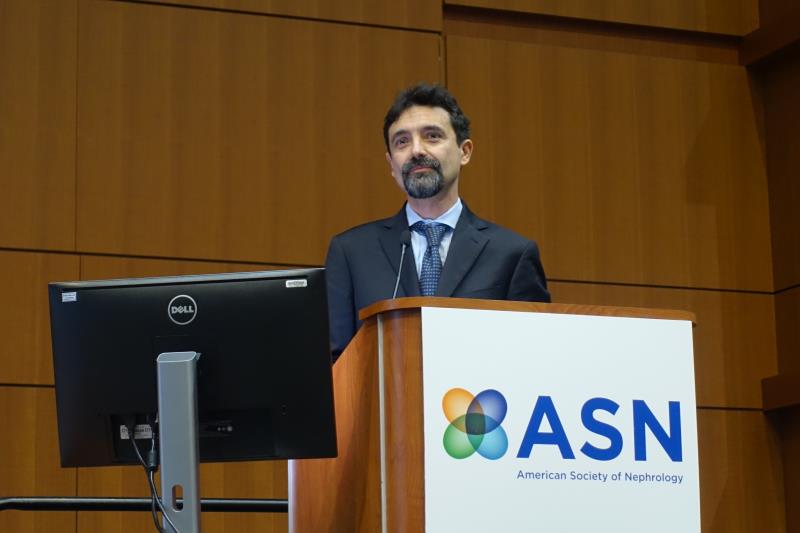 Dr Paolo Cravedi
Dr Paolo CravediAzathioprine (AZA) shows similar safety and efficacy as mycophenolate mofetil (MMF) in preventing chronic kidney rejection in kidney transplant recipients who received low-dose cyclosporine A (CsA) and no steroids, according to the ATHENA* study presented at ASN 2019, thus debunking the belief that MMF is better than AZA.
Many transplant patients receive the immunosuppressant MMF despite poor evidence showing it is more effective than AZA, an older and less expensive alternative.
Findings of fewer acute kidney rejections with MMF- over AZA-based regimens in the registration trials had prompted a rapid switch from using AZA to MMF in immunosuppressive regimen for kidney transplant recipients. However, the registration trials were conducted with the old formulation of CsA (Sandimmune) and multiple trials with standard-dose of the current more stable microemulsion CsA formulation (Neoral) did not confirm the earlier findings.
“Switching patients from AZA to MMF had a major economic impact. Over this time period, we spent almost 1 billion dollars, which could have been saved if patients were on AZA,” said lead author Dr Paolo Cravedi from Icahn School of Medicine at Mount Sinai in New York, New York, US.
“Due to higher costs of brand name mycophenolate and concerns on generic formulation quality, no evidence supports its further use over AZA,” he stated.
In the prospective, multicentre ATHENA trial, 233 patients (mean age 52 years) undergoing kidney transplantation were randomized 1:1 to receive AZA or MMF. All participants were induced with low-dose thymoglobulin plus basiliximab. [ASN 2019, abstract FR-OR135]
The primary endpoint of the incidence of chronic allograft nephropathy (CAN) at 3 years was similar between the AZA vs the MMF groups (32.4 percent vs 31.9 percent). Graft function was also comparable between the two groups throughout the 3 years.
Furthermore, no significant differences were found in the rates of subclinical acute rejection (hazard ratio [HR], 1.49; p=0.249) and biopsy-proven acute rejection (HR, 0.58; p=0.057) between the two groups.
When the patients were stratified by acute rejection status, incidence of CAN did not differ regardless of whether they developed acute rejection or not (HR, 0.779; p=0.344), which according to Cravedi, indicates that the episodes of acute rejection were relatively mild and well managed.
Among a subset of patients who met the criteria** for CsA tapering, the incidence of CAN also did not differ between the AZA and the MMF groups (HR, 1.084; p=0.828).
In terms of the safety profile, both drugs were well tolerated with no significant differences between the two arms in the incidence of leukopenia, neutropenia, thrombocytopenia, and gastrointestinal-related adverse events.
“Due to the lower costs, AZA represents a valuable alternative to MMF in patients who were also on low-dose maintenance immunosuppression,” said Cravedi.